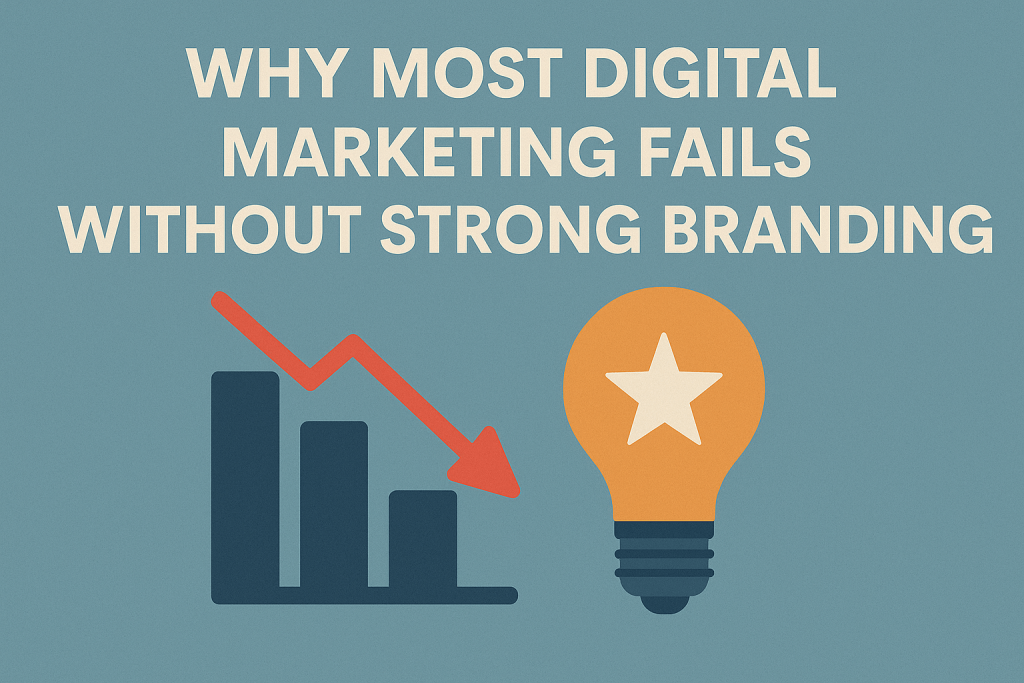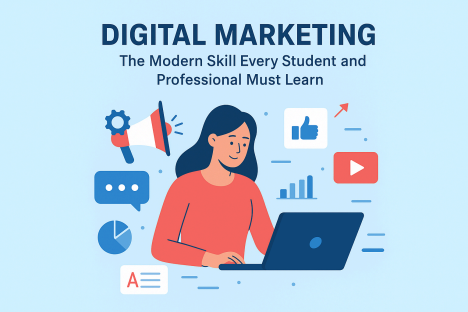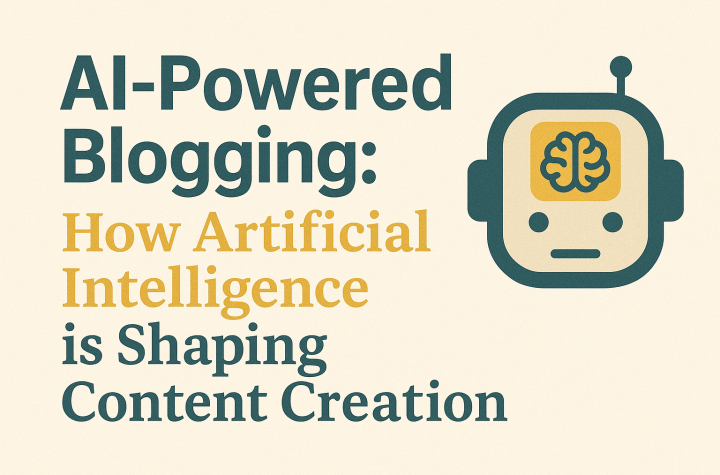
- Digital marketing efforts often underperform without a distinct brand identity to ground them.
- Branding builds trust, awareness, and emotional connection; without it, you’re merely noise in a busy feed.
- Consistent visuals, tone of voice, and narrative all contribute to performance across all marketing channels.
- A powerful brand enhances customer loyalty, increases conversions, and raises return on advertising (ROAS).
Introduction
It’s not always your ad copy, keywords, or targeting. More often than not, it’s your brand (or lack thereof) that is falling flat.
Digital marketing is no longer a game of who shouts the loudest. In an online world awash in offers, reels, pop-ups, and “Buy Now” buttons, branding wins the battle of who is remembered.
If your digital marketing isn’t producing results, chances are your branding is failing. Before your next campaign torches another gap in your budget, let’s explore why that happens—and how to fix it.
What Happens When Digital Marketing Operates Without Branding?
Imagine this: you’ve launched an Instagram campaign with targeted reach and engaging visuals. The CTR looks good—but no one’s converting. People visit your site… and bounce. Why?
Because they’re not sure who you are, what you stand for, or why they should trust you.
Here’s what weak branding causes:
- Low conversion rates despite decent traffic
- Inconsistent messaging across platforms
- Forgettable visuals and generic tone
- High bounce rate and poor customer retention
- Lack of emotional engagement with your audience
Without branding, your digital marketing feels like a series of disjointed ads, not a story people want to follow.
What Is Strong Branding (and What It’s Not)
Branding goes far beyond a logo. It’s how your company sees itself, what it promises, and how it shows up.
It includes:
- Tone of voice: Humorous, professional, empathetic, etc.
- Mission and values: What do you truly believe in?
- Storytelling: What journey are you inviting the customer on?
- Personality: How do you sound, feel, and appear?
Great branding helps establish emotional connection and recognition. It builds trust before your pitch even begins.
Conversely, marketing without branding is forgettable, like handing out a business card with no name.
Why Branding Supercharges Digital Marketing
1. Builds Trust from the First Touchpoint
People don’t trust ads – they trust brands. When branding is consistent across your website, social channels, and ads, customers feel safe. That trust drives conversions.
2. Improves Ad Performance
Even great Facebook or Google Ads will hit a ceiling if the brand behind them feels disconnected. But when users click through and see a familiar, consistent identity, conversion rates rise.
3. Drives Recognition in Crowded Markets
Whether you’re in SaaS or selling handcrafted jewellery, buyers have options. Branding helps you stand out and be remembered.
4. Elevates Retention and Loyalty
Customers don’t just buy products – they buy into brands. If they connect with your message, they’ll stay, even when your competitor offers a better deal.
The Real Reason Your Campaigns Aren’t Converting
Let’s get tactical.
You might be:
- Running performance ads with no brand story
- Optimizing your site UX without cohesive branding
- Sending emails with inconsistent tone and design
Even your CTAs lose power when they come from a brand that feels unfamiliar.
Imagine Apple launching a product with a pixelated logo and a generic product page. Would you still buy?
Branding gives your marketing meaning. Without it, you’re selling to strangers, with no introduction.
How to Integrate Branding Into Your Digital Marketing
Step 1: Clarify Your Brand Foundations
Before launching any campaign, align on:
- Mission: What motivates your company?
- Vision: What change do you want to bring?
- Character: Are you a friendly guide or a confident expert?
- Tone: Witty, professional, casual, heartfelt?
Step 2: Ensure Visual Consistency
Your brand visuals should:
- Be consistent across social, ads, web, and packaging
- Be adapted for digital-first formats (mobile, reels, etc.)
- Reflect your core values (premium, playful, minimal, etc.)
Step 3: Build Brand Guidelines
Document your:
- Logo variations
- Color palette and fonts
- Tone of voice
- Do’s and don’ts for internal and external creatives
Step 4: Craft a Story-Driven Funnel
- Top-of-funnel: Share beliefs, origin stories, BTS
- Mid-funnel: Use reviews, benefits, case studies
- Bottom-funnel: Push for conversion, but keep tone consistent and human
Step 5: Align Your Entire Team
Make sure your team, freelancers, and agencies are on the same page. Branding is a team effort, not a solo show.
Case Study: Branding-First Approach for Performance Marketing
Client: A fast-growing D2C skincare brand
Problem: Despite high ad spend, conversion rates were stuck below 1%
Solution: Partnered with SimplePlan Media to align branding with performance marketing.
Actions Taken:
- Shifted brand tone from generic to friendly + authentic
- Added story-based elements to product pages
- Updated ad creatives to reflect visual consistency
Results:
- CTR remained stable
- Conversion rate jumped to 3.7%
- Time on site doubled
- Repeat purchase rate rose by 45% in 6 months
Lesson: Performance marketing thrives when it’s rooted in solid branding.
Branding Tips by Channel
For Facebook & Instagram Ads
- Use consistent brand fonts and color schemes
- Include your logo subtly
- Ensure your ad tone matches the landing page
For Google Ads
- Focus on clarity over clickbait
- Let your brand tone come through in headlines and extensions
For Email Marketing
- Use branded templates and voice
- Match headers, CTAs, and body copy to your brand personality
For SEO Content
- Don’t just chase keywords
- Infuse brand stories, tone, and values in blogs and landing pages
Branding Mistakes That Hurt Your Marketing
Avoid:
- Using random or stock visuals that don’t reflect your brand vibe
- Inconsistent tone across platforms
- Lack of branding rules for external collaborators
- Campaigns without story-driven landing pages
- Thinking your logo is your brand (it’s just a piece of it)
Fixing these lifts everything from CTR to LTV.
Why Branding Matters for Long-Term Growth
Digital marketing without branding may get attention, but branding earns loyalty.
A strong brand:
- Reduces long-term acquisition costs
- Builds advocacy and word-of-mouth
- Justifies premium pricing
- Future-proofs you against fads and algorithm changes
If you’re tired of chasing conversions and want customers to choose you, branding is your foundation.
FAQs: Digital Marketing & Branding
Q1: Can I run paid ads before building a brand?
You can—but it’s risky. Without branding, your ads may bring traffic that doesn’t convert. Branding improves ROAS.
Q2: Isn’t branding just for large companies?
Absolutely not. Startups and small businesses benefit even more from clear branding, as it’s their edge in crowded markets.
Q3: Do I really need brand guidelines?
Yes. Especially if you’re working with freelancers, designers, or agencies. It ensures every touchpoint feels aligned.
Q4: How do I measure branding impact?
Check your brand search volume, conversion rates, repeat purchases, and customer sentiment. These indirect metrics speak volumes.
Q5: Should branding come before SEO or performance marketing?
Ideally, yes. Branding builds the trust that improves all your marketing performance, from paid to organic.
Final Thoughts
Your next digital marketing campaign shouldn’t start with an ad. It should start with your brand.
Marketing that converts in today’s world begins with branding that connects.
If your efforts aren’t sticking, don’t jump platforms; rethink your foundation.And if you’re ready to build a brand that powers long-term digital success, partnering with a team like SimplePlan Media can help turn clicks into customers—and customers into loyal fans.




More Stories
Proven Strategies for Effective Event Marketing
How Organic Visibility Helps Startups Compete with Established Brands?
Digital Marketing: Modern Skill Every Student and Professional Must Learn